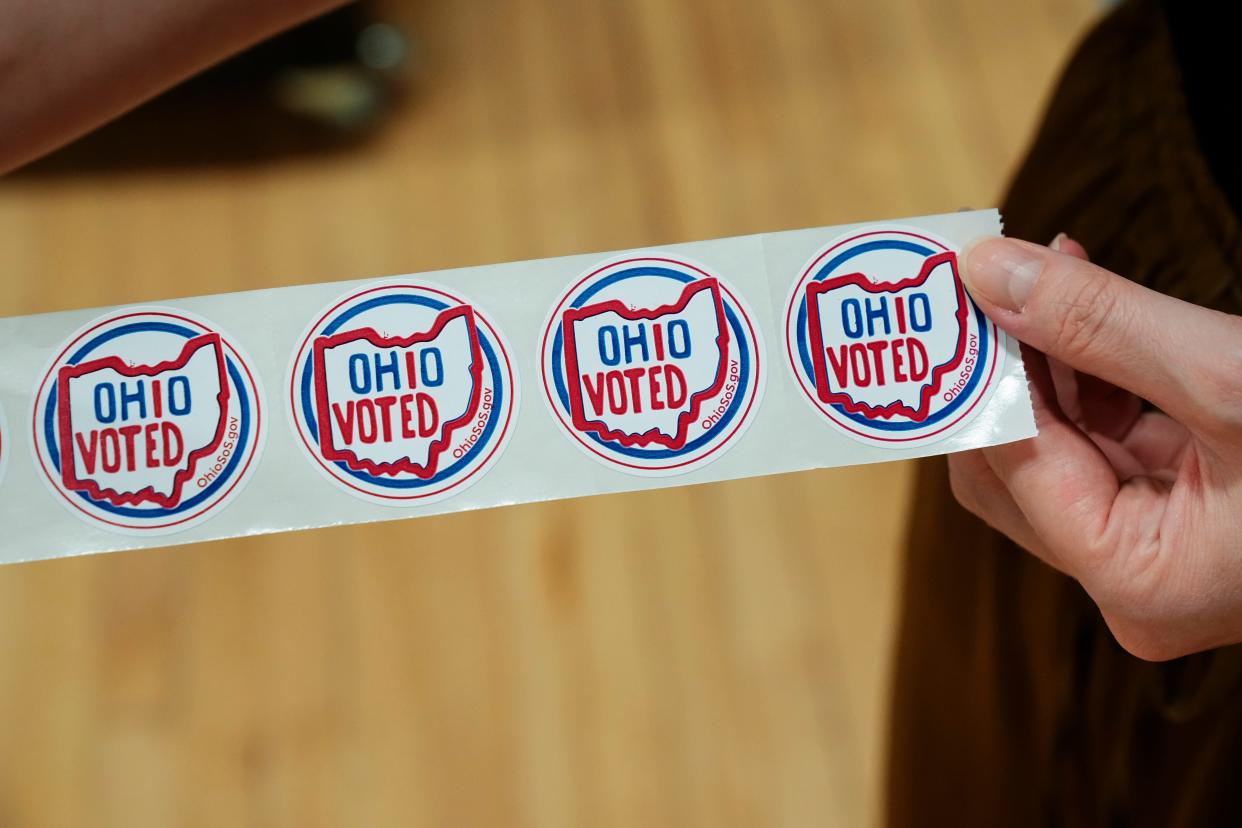It's bad no matter which party does it. Democrats rigged Ohio before GOP came on scene.

Mike Curtin is a career newspaperman with 38 years at the Columbus Dispatch followed by four years in the Ohio House (2013-2016).
Throughout Ohio history, the majority party in the state legislature has rigged elections by gerrymandering districts. Especially congressional districts.
And from our state’s early days to today, reform efforts have failed.
In 1842, more than a decade before the birth of the Republican Party, Democrats in control of the Ohio General Assembly began gerrymandering the state’s 21 congressional districts to expand their power at the expense of the Whig Party.
Outraged Whigs verse gerrymandering Democrats

With mid-term November elections approaching, Democrats drew 12 safe seats for themselves, packed Whigs into seven supermajority districts, leaving two competitive seats.
Enraged, Whig members of the Ohio House and Ohio Senate torpedoed the plan by resigning their seats, thereby preventing a quorum and forcing a delay in Ohio’s congressional elections until 1843.
Where's our Obi-Wan Kenobi? Ohio Republican playing role of evil Galactic Empire |Opinion
During the second half of the 19th century, state legislative leaders abandoned the tradition of redistricting only once per decade after each federal census. Between 1878 and 1892, as legislative power shifted between Democrats and Republicans, new congressional district lines were drawn – and gerrymandered — six times.

One of Ohio’s most famous politicians, future President William McKinley, in 1890 lost re-election to Congress primarily because of gerrymandering.
In 1891 (in those days elections for statewide office were held in odd-numbered years), McKinley was elected governor of Ohio. In his inaugural address of January 1892, he condemned gerrymandering and urged reform. To no avail.
By 1901, gerrymandering had enough of a bad rap nationally that Congress passed a law requiring congressional districts to be compact. Subsequent violations were ignored.
2024 promises to be a wild year in Ohio: 10 fearless predictions for the new year
President Benjamin Harrison, an Ohioan who served from 1889 to 1893, declared a truly representative government requires “an equality of value in each ballot cast.”
What is the impact of gerrymandering?
By definition, gerrymandering ensures some ballots count more than others.
It inflates one party’s strength while diluting the opposing party’s strength. It creates odd-shaped districts designed to pack as many voters of the opposite party into as few districts as possible, leaving a majority of districts to be won by the party controlling the mapmaking process.
Unfortunately, no federal standards apply to partisan gerrymandering. Most recently, in June 2019, this impotency was reaffirmed when the U.S. Supreme Court, in a case from North Carolina, held that partisan gerrymandering is outside the scope of federal law.
Earlier: 'Brazen crookedness' that lead to constitutional right LaRose wants to seize
Over the years, the lack of a federal standard has been lamented by many U.S. Supreme Court justices. Justice Anthony M. Kennedy summed it up best: “It is unfortunate that when it comes to apportionment, we are in the business of rigging elections.”
Ohioans victim of the bait-and-switch
With no federal standard, the continuing battle to curb the evil of gerrymandering must be waged state by state.
Ohioans were promised a cure in 2018 and voted 3-to-1 for an amendment to the Ohio Constitution to “end the partisan process for drawing congressional districts,” promote bipartisanship, and create more compact districts.
Unfortunately, the promise of reform proved to be a bait-and-switch. In 2022, Statehouse leaders in charge of the new Ohio Redistricting Commission ignored repeated Ohio Supreme Court rulings invalidating both congressional and state legislative maps.
Snakes, serpents and squids: Here is what you need to know about gerrymandering.
One glance at the new map of Ohio’s 15 congressional districts reveals meandering, misshapen, anything-but-compact districts gerrymandered for one party’s benefit. This time, to benefit Republicans.
For example, the 5th Congressional District stretches from the Indiana border to northeastern Ohio’s Lorain County.
The 4th district needlessly divides Shelby County while marching 150 miles from Fort Loramie to lonely Widowville in Ashland County. At least another five districts are blatantly misshapen.
It’s beyond time Ohioans take charge and deliver a death blow to gerrymandering by adopting a truly independent process for drawing congressional and state legislative maps.
The proposal sponsored by Citizens Not Politicians, planned for this November’s ballot, would allow Ohio to follow the lead of Arizona (2000), California (2008), Colorado (2018) and Michigan (2018) in ending rigged elections.
Ohio history proves Statehouse politicians, no matter how much they promise, will never do it on their own.
Mike Curtin is a career newspaperman with 38 years at the Columbus Dispatch followed by four years in the Ohio House (2013-2016).
This article originally appeared on The Columbus Dispatch: Ohio has long been sliced, diced by parties. Why gerrymandering must go.

